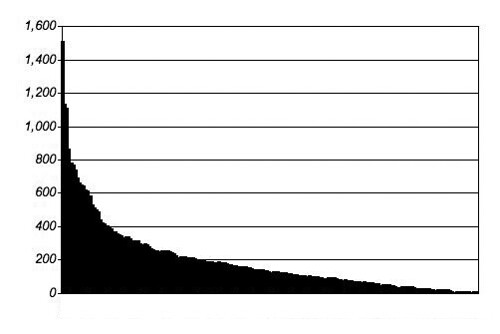This is more a public note to myself than anything else. It’s likely to seem a bit odd to those who haven’t been following my thinking on memes. Cross-posted at New Savanna.
Back in 1996 I published a long article, Culture as an Evolutionary Arena (link to downloadable PDF), in the, alas, now defunct, Journal of Social and Evolutionary Systems. In that article I introduced the notion of units of cultural inheritance with these paragraphs:
Following conversations with David Hays, I suggest that we regard the whole of physical culture as the genes: the pots and knives, the looms and cured hides, the utterances and written words, the ploughshares and transistors, the songs and painted images, the tents and stone fortifications, the dances and sculpted figures, all of it. For these are the things which people exchange with one another, through which they interact with one another. They can be counted and classified and variously studied.
What then of the ideas, desires, emotions, and attitudes behind these things? After all, as any college sophomore can point out, words on a page are just splotches unless apprehended by an appropriately prepared mind, one that knows the language. Pots and knives are not so ineffable as runes and ideograms, but they aren’t of much use to people who don’t know how to use them, that is, to people whose minds lack the appropriate neural “programs”. Surely, one might propose, these mental objects and processes are the stuff of culture.
What I in fact propose is that we think of these mental objects and processes as being analogous to the biologist’s phenotype just as the physical objects and processes are analogous to the genotype. Properly understood, these mental objects and processes are embodied in brain states (cf. Benzon and Hays 1988). Thus we have the whole of physical culture interacting with the inner cultural environment to produce the various mental objects and activities which are the substance of culture.
Richard Dawkins has proposed the term “meme” for the units of the cultural genotype, but proposes no special term for the cultural phenotype, though he recognizes the necessity of distinguishing the two (Dawkins 1982, pp. 109 ff., see also Dawkins 1989, pp. 189 ff.). Following more or less standard anthropological usage, I offer “psychological trait”, or just “trait”, as a term designating phenotypical units or features. Note, however, that Dawkins places memes in the brain and traits in the external world, which is just the opposite of what I am doing.
I have maintained that position until quite recently, say a week or two ago. I am now considering abandoning that conception. But first, a little more about how I further developed it.
In my 2001 book on music, Beethoven’s Anvil, I developed that idea with respect to music, arguing that the neural ‘trace’ (trajectory in neural state space) of musical performances is a cultural phenotype while the memes are those aspects of musical sound around which individuals coordinate their music-making activities. I further developed this idea only a few weeks ago in a series of posts I wrote as background to a post I did for the National Humanities Center on cultural evolution.
Continue reading “Where Are Memes?”
 Continue reading “Digital Humanities Sandbox Goes to the Congo”
Continue reading “Digital Humanities Sandbox Goes to the Congo”
